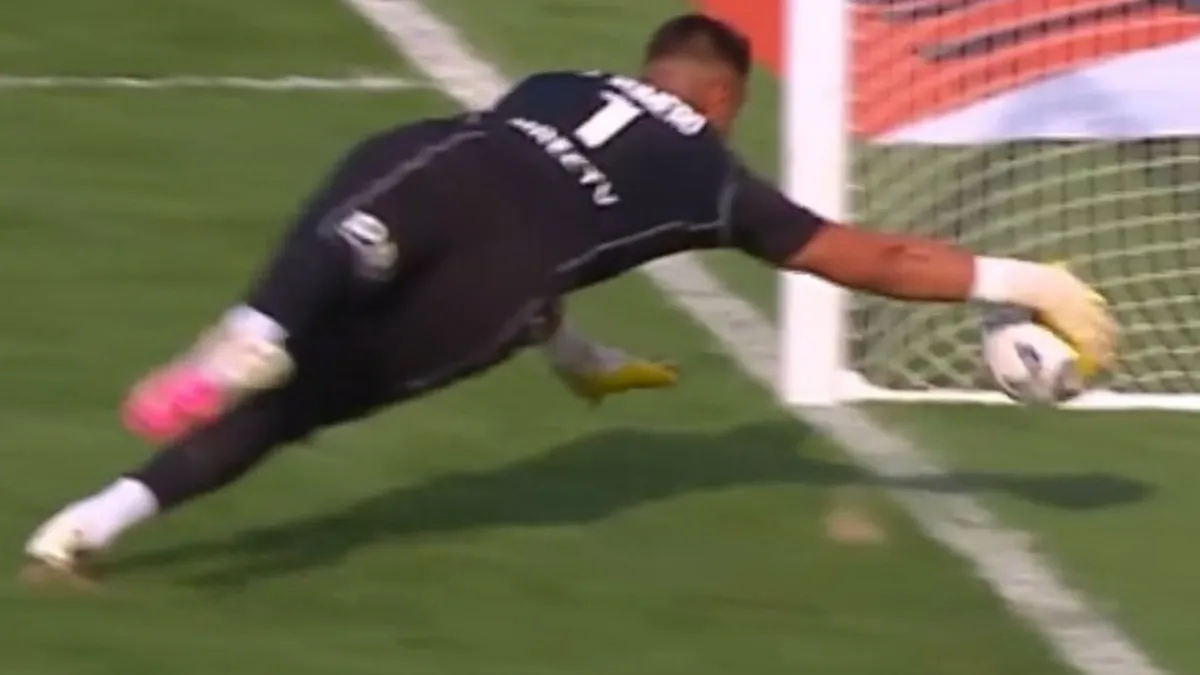It is not about being in the first or third world. Yesterday, both in Spain and in Argentina, both in Madrid and in Córdoba, the so-called “ghost goals” were present in the classics that Real Madrid beat Barcelona 3 to 2 and in which Boca beat River, for the same result.
On both sides of the ocean it was not possible to verify with certainty whether or not the ball completely crossed the line, that is, whether or not it was a goal for River and Barcelona.
The truth is that – despite having occurred in defining moments of the tournaments – the protagonists took it in different ways.
While the River coach, Martín Demichelis, did not want to talk about the goal against Cristian Lema that was annulled, arguing that he did not see it, in Barcelona the president of the Catalan club, Joan Laporta, came to the crossroads after the referee controversy that hit the Real Madrid classic played at the Santiago Bernabéu. The Blaugrana president published an institutional video in which he threatens to request a replay of the match, if the validity of the ghost goal not awarded to Lamine Yamal is confirmed.
The truth is that in both cases – more so in Catalonia – people began to talk about why the automatic goal detection system is not used.
How does it work
“Automatic goal detection is a technical means to instantly determine whether or not the ball has completely crossed the goal line. Since its launch in 2014, this technology has been a fundamental element in the world of football,” said FIFA, which also used it in the last World Cup in Qatar.
GHOST GOAL 3.webp
Unverifiable. Without the use of technology and with the ball in the air, the question will always remain whether he completely crossed the goal line or not.
Saint John 8
The technology allows us to conclude whether there was a goal or not almost instantly. Automatic goal detection categorically determines whether the ball has completely crossed the goal line, information that helps referees make a final decision. The information is transmitted within a period of one second, which guarantees an immediate response from the referee team.
To do this, the judges’ clock indicates whether the ball entered the goal or not, thanks to 14 cameras. The members of the referee team are the only ones who receive the indication on their watch. The system uses fourteen high-speed cameras installed on the stadium walkway or under its cover.. The data from the cameras is used to generate a 3D animation, in order to show the decision both on television and on the giant screen inside the stadium.
These cameras are not the same ones that detect offsides. The high-speed cameras of goal-line technologies focus only on the two goal areas and do not cover the entire field of play. Therefore, cameras are not used for semi-automatic offside technology.
Likewise, the chip inside the ball does not affect the decision of this technology. The automatic goal detection system used in the 2022 World Cup was based on fourteen high-speed cameras. The data from the sensor inside the ball was not used to determine whether or not the ball had crossed the goal line..
In Spain
He President of LaLiga, Javier Tebas, already addressed the topic of the possible implementation of goal technology not long ago. Specifically, it was at the beginning of this season when he was asked about the possibility of the Spanish league competition having the same tools that FIFA, UEFA, international matches, the Premier League, the Bundesliga, Serie A and Ligue 1.”It is not an economic issue The goal technology thing is a matter of use. in one season there are four or five plays of this type“, said .
“99% of the time you can see if it is a goal or not a goal. Where there are errors is with the goal technology. In the Premier it has happened. Goal technology is not perfect, we prefer this one. We do not plan to establish it,” he then acknowledged about a possible future advance when determining this type of plays, which would have a cost of around 4 million euros per season but does not consider it 100% reliable.
Cost issue
This Sunday, it seemed that everything was leading to a tie, but a series of rebounds caused Lema to direct the ball to Romero’s goal, who was quick with his reflexes and got it just right. In that sense, the referee Yael Falcón Pérez determined that he had crossed the entire line and that the advantage was for the group as a whole. Martin Demichelisalthough the joy was short-lived for River when the VAR check made the decision to annul the goal.
With this panorama, questions arise. Why is the “Hawk’s Eye” not used in Argentina? The main objective of this technology is to demonstrate whether or not the ball crossed the goal line, but its high cost became an impediment to using it in our soccer.
“The most important thing would be for them to set the clock. Not even I could tell my teammates if it came in or not,” Sergio “Chiquito” Romero had declared after the game.
Put things like this, while in Spain the head of LaLiga says that the technological system is not 100% secure, in Argentina it seems that everything is due to a cost issue.
Source: Ambito
I am Pierce Boyd, a driven and ambitious professional working in the news industry. I have been writing for 24 Hours Worlds for over five years, specializing in sports section coverage. During my tenure at the publication, I have built an impressive portfolio of articles that has earned me a reputation as an experienced journalist and content creator.




